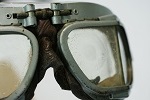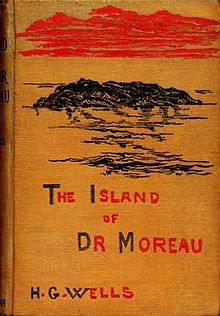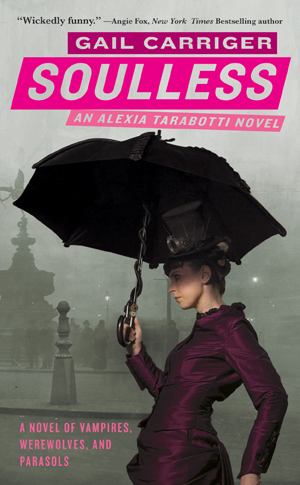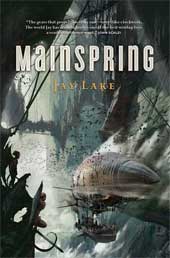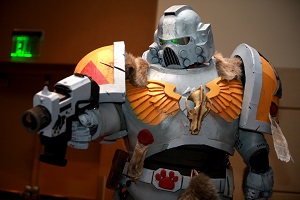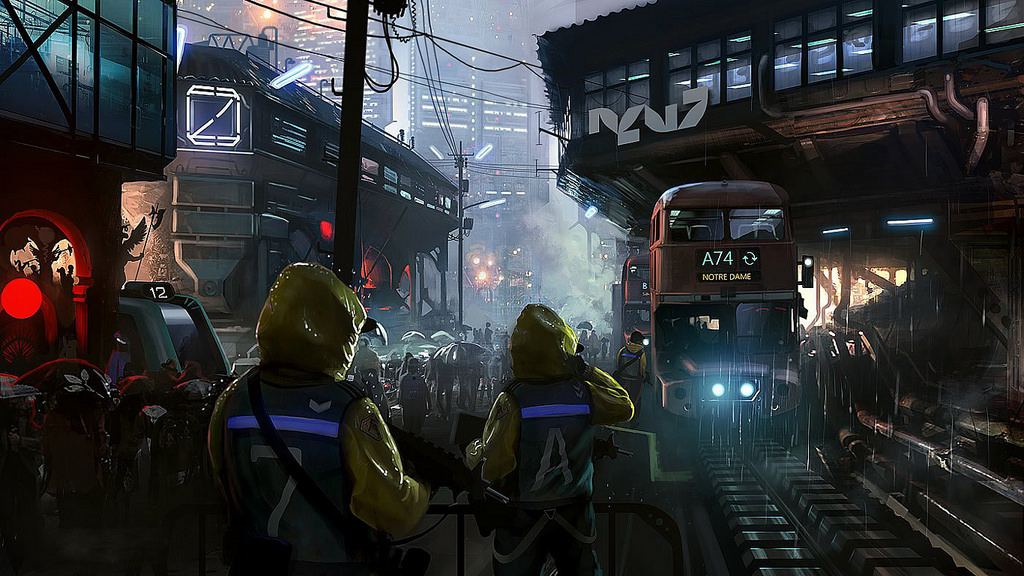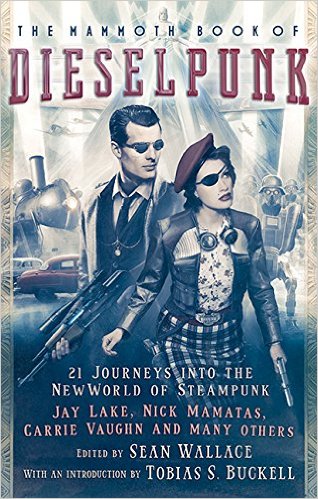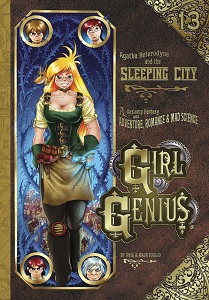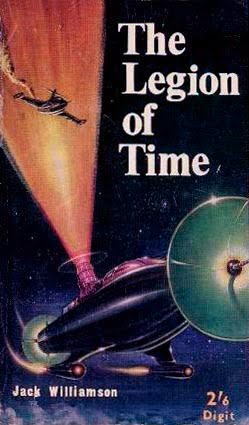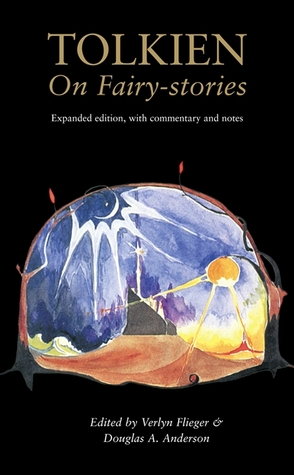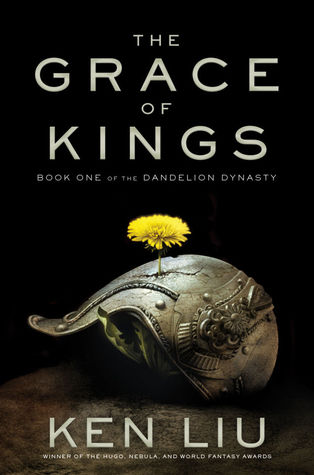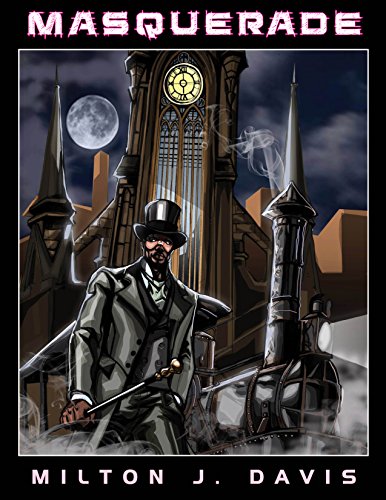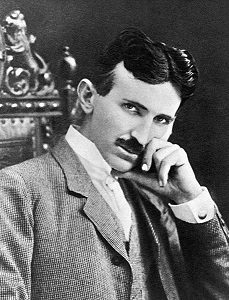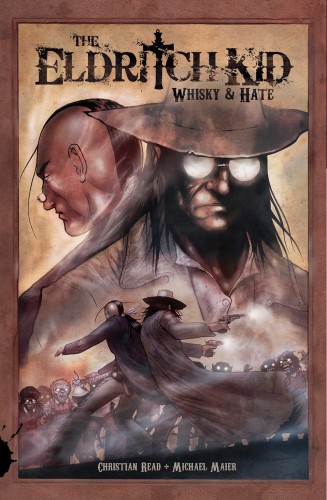AustLit
-
This list of terms is designed to assist readers in understanding some of the various genre-related terms that are used both in this exhibition and in wider discussions of steampunk. Words in the definitions that are bolded have their own definitions in the glossary.
Note: not all members of the community acknowledge or use all of these terms – in some cases they represent particular approaches or viewpoints that are not necessarily shared by all practitioners and readers.
-
Allohistories : Coined by Gavriel Rosenfeld in The World Hitler Never Made: Alternate History and the Memory of Nazism (Cambridge UP, 2005), from the Greek ἄλλος (állos), a prefix meaning 'different' or 'other'.
-
Alt.history : The term used throughout this exhibition for alternative history (also called alternate history), fiction in which one or more historical events happened differently, leading to a different version of what is otherwise history. Primary-world steampunk novels are almost always classified as alt.history, although the jonbar hinge varies from text to text. See also uchronia.
-
Biopunk : An offshoot of cyberpunk that operates in a similar manner, only replacing the steam or cyber technology with bio-engineering and organic-based technology. It typically deals with the implications for biological technology and genetic engineering in the near future, focusing in a similar manner to cyberpunk on the criminal or otherwise low-life members of society, be they bio-hackers, corporate assassins, or general gangsters. Like cyberpunk, biopunk typically trends towards the dystopian end of science fiction. Works of proto-biopunk include H.G. Wells's The Island of Dr Moreau (1896), in which the titular scientist creates humanoid hybrids through vivisecting animals. Works that are classified as steampunk also often have elements of biopunk: for example, D.M. Cornish's Monster Blood Tattoo trilogy and the early instalments of the BioShock video-game series.
-
Bricolage : The construction of a work from a diverse range of available materials (or, conversely, the name for the resulting work). In literary theory, bricolage is generally used to describe intertextuality. Other terms have been used to describe the intertextual nature of steampunk, but bricolage, with its flavour of maker culture, is particularly apt.
-
Bustlepunk : coined by American novelist M.K. Hobson in 2009, the term was originally applied to authors such as Gail Carriger, Mary Robinette Kowal, and Susan Krinard, as well as Hobson herself. (Hobson originally listed Cherie Priest among the practitioners, but later acknowledged that Priest did not meet the criteria.) The term proved somewhat controversial (as some steampunk aficionados disapproved of what they felt was a gendering of steampunk), but has proved somewhat tenacious. Bustlepunk stories usually include some of the traditional trappings of steampunk (especially a nineteenth-century setting, but usually also anachronistic technology), but often also have a strong magical component and a focus on a central romance.
-
Cattlepunk : See Weird Western.
-
Clockpunk : Coined as part of the GURPS role-playing system, clockpunk works take place in pre-Industrial Revolution timeframes, usually the Renaissance. Clockpunk draws heavily from pre-modern technologies, with a strong focus on clockwork technology. Leonardo da Vinci is often central to clockpunk world-building (for example, the television series Da Vinci's Demons), as is Sir Isaac Newton. Because clockpunk is pre-Industrial Revolution, it tends to be more open to non-Western historical figures, including Islamic polymath Ibn Ismail Ibn al-Razzaz Al-Jazari (.بديع الزمان أَبُو اَلْعِزِ بْنُ إسْماعِيلِ بْنُ الرِّزاز الجزري).
Among the most prominent clockpunk novels is Jay Lake's Mainspring (2007) and its sequels. Among Australian writers, Garth Nix's 'Peace in Our Time' is closer to clockpunk than steampunk.
-
Cosplay : Cosplay is the act of donning costumes and accessories to represent a specific historical or fictional character or aesthetic mode. Sometimes called performance art, cosplay is particularly strong in (but not limited to) fan communities. For example, the 501st Legion (Vader's Fist), formed in 1997, is an international organisation dedicated to the making and wearing of screen-accurate replicas of Star Wars costumes. Cosplay is particularly prominent in maker cultures such as steampunk, but also carries over to steampunk authors in a way that is less common in other genres. Steampunk cosplayers are usually called steampunkers or, less commonly, are said to have a steamsona (a portmanteau of 'steampunk' and 'persona').
-
Cyberpunk : Science-fiction sub-genre focusing on advanced technologies and their effects on societies in various states of breakdown or change. Usually narrated from the perspective of characters living at the fringes of society, either as criminals or loners, and often highlighting the character of the hacker. Typical plots often involve hacking, advanced artificial intelligences, and corrupt mega-corporations, and are more often set in near-future Earth.
-
Decopunk : A relatively recent subset of steampunk, decopunk is centred on the 1920s to the 1950s, often with a strong American focus. Decopunk is often described by its authors as gritter than steampunk, in part because it covers the economic depression of the 1930s. However, there is a strong overlap between the two forms: pioneering Paul di Fillipo, for example, contributed a short story to the collection Decopunk: The Spirit of the Age (2015). The use of the term 'decopunk' was proposed as early as Sky Captain and the World of Tomorrow (2004) and applied to the original BioShock game (2007), but is still very much a niche term, and more likely to be applied to works retroactively than to be used deliberately by authors. Among the more recent Decopunk works are Catherynne Valente's Radiance (2016) and Lara Elena Donnelly's Amberlough (2017).
-
Dieselpunk : Something of an offshoot of steampunk, dieselpunk operates in many ways similarly to steampunk, involving anachronism and advanced technology in alternate pasts or futures but replacing the steam and clockwork of steampunk with the diesel-powered technology of the early to middle twentieth century. Dieselpunk typically includes less of the Victorian element than steampunk. Sean Wallace, in the Mammoth Book of Dieselpunk (2015), specifically positions the form to the inter-war period: after World War I and before World War II. Dieselpunk is now often applied to post-apocalyptic settings, such as the Mad Max franchise (particularly Mad Max : Fury Road), because of the scarcity of fossil-fuel resources and the commensurate obsession with obtaining and controlling petrol. Similarly, science-fiction works using an interwar aesthetic outside the 1919-1938 timeframe, such as Ashley Wood's WWR, can be aligned with dieselpunk.
-
Gaslamp fantasy : A subgenre of fantasy and historical fiction. Gaslamp fantasy is usually set in the Victorian or Edwardian period (prior to widespread electric lighting), and may or may not have a fantasy component. The boundaries between gaslamp fantasy and steampunk are relatively porous, although fans will draw sharp distinctions. The term was coined by Kaja Foglio for her Agatha Heterodyne series, partly to avoid confusion with a then-extant comic series called Steampunk but also because 'I've never liked the term Steampunk much for our work, it's derived from Cyberpunk (a term which I think actually fits its genre well) but we have no punk, and we have more than just steam, and using a different name seemed appropriate' (source). The distinction is usually drawn from the work's level of concern with technologies of the Industrial Revolution, steampunk being more concerned and gaslamp less concerned. Other distinctions, such as steampunk taking place in uchronic time, are sometimes made but are less convincing.
-
Jonbar hinge : Also jonbar point or change-point, a jonbar hinge is the point of divergence in a time-travel or alt.history novel that creates the new version of history. The name is derived from Jack Williamson's story The Legion of Time, in which a character called John Barr can create a utopian society or a tyranny, depending on whether he picks up a magnet or a pebble. The jonbar hinge applies to steampunk novels set in an alt.history version of Earth. In The Difference Engine, for example, the jonbar hinge is Charles Babbage's successful invention of the difference engine in the early nineteenth century; in The Kraken King, it is the smooth passage of power after Genghis Khan's death. When jonbar hinges are perceived to be too implausible even for alt.history, they are described as 'alien space bats' (ASBs). The term 'jonbar hinge' is somewhat analogous to the term 'butterfly effect', which plays a role in time travel novels.
-
Native steampunk : (Also Nativepunk.) A term used by (some) steampunkers to describe steampunk personas influenced by indigenous maker cultures – usually, but not exclusively, Native American groups. As with many terms outside Eurocentric steampunk, it can be a conflicted one, but is used in this exhibition as a succinct way of both addressing problems of representation and calling up concerns of exoticism.
-
Neo-Victorian : Refers to the engagement with Victorian (and sometimes Edwardian) culture and aesthetics, but always with the awareness that the engagement is filtered through a postmodern perspective. Neo-Victorianism is sometimes described as an aesthetic movement, but is also an increasingly active subset of literary criticism. Neo-Victorianism as a critical perspective maintains a consciousness of the two opposed uses of the prefix 'neo': as conservative and as progressive. John Fowles's The French Lieutenant's Woman (1969) is sometimes described as the first Neo-Victorian novel, but the form has expanded since 1990, with works by such authors as A.S. Byatt, Sarah Waters, Michel Faber, and Peter Carey, and various television programs and films, including Guy Ritchie's Sherlock Holmes films and the American series Penny Dreadful. In this exhibition, 'Neo-Victorian' refers to primary-world steampunk novels set within the alt.historical nineteenth century. See also pseudo-Victorian.
-
Primary World : Settings in the real world, e.g., London, Australia, Japan. Like the term 'secondary world', with which it is paired, it was coined by J.R.R. Tolkien in an essay 'On Fairy-Stories', originally written as the Andrew Lang Lecture at the University of St Andrews in 1939 and first published in 1947. In the essay, 'primary world' is presented as the real world in which you read the story, rather than as a setting in itself; the term has subsequently shifted to take a more directly opposed definition to 'secondary world'.
-
Proto-steampunk : works that, while they were written before the advent of steampunk as a recognisable sub-genre (in some cases, by well over a century), nevertheless are seen to showcase some of the characteristics that later fed into steampunk, particularly a fascination with anachronistic technology and its influence on society. Chief among practitioners are H.G. Wells, Jules Verne, and Mary Shelley, but other sources will list works as varied as the American television series the Wild Wild West (1965-1967), Mervyn Peake's Gormenghast trilogy, or comic book series The Adventures of Luther Arkwright (1978-1989).
-
Pseudo-Victorian : Referring to settings and stories that riff on and take from Victorian elements, often going so far as to completely ventriloquise a popular understanding of Victorian culture, but which are not explicitly set either in the Victorian era or within the British Empire. This is often due to the story taking place in a heavily Victorian-inspired secondary world. In this exhibition, pseudo-Victorian refers to works that
a. take place outside the British Empire, even when those works are set in the period 1837 to 1901.
b. take place outside the Victorian era, including the far future, but still borrow elements of the Victorian culture.
c. take place on secondary worlds where the culture is influenced by the Victorian era.
-
Secondary World : Settings in entirely fictional worlds, e.g., the world of D. M. Cornish's Monster Blood Tattoo series; the world of Sara Douglass' The Axis Trilogy. Many are heavily inspired by real-world analogues, and in some cases the similarities accrue to so great a weight that they begin to blur the boundaries between primary and secondary worlds, e.g., Michael Pryor's Laws of Magic series. The term 'secondary world' was coined by J.R.R. Tolkien in his essay 'On Fairy-Stories' :
'He [the author] makes a Secondary World which your mind can enter. Inside it, what he relates is "true", it accords with the laws of that world. You therefore believe it, while you are, as it were, inside. The moment disbelief arises, the spell is broken, the magic, or rather art, has failed. You are then out in the Primary World again, looking at the little abortive Secondary World from outside.'
See also Primary World.
-
Silkpunk : Coined by author Ken Liu, silkpunk refers specifically to Liu's own works, especially The Grace of Kings (2016) and sequels, which draw the technological component of their world-building from classical East Asia, with a particular focus on organic materials that were central (culturally and economically) to that region and to the Pacific: silk, paper, bamboo, coconut and its fibers, feathers, and coral. For example, Liu's work includes battle kites and bamboo-and-silk airships. (See interview with Ken Liu.) Silkpunk is still a nascent concept, but early shades of it can be seen in works such as Jay Kristoff's Lotus War saga (with its secondary-world, pseudo-Japanese setting) and Meljean Brook's The Kraken King (in the Imperial City, built by Japanese colonists out of the living coral of the Great Barrier Reef). In the interview cited above, Liu also suggests Zhang Ran’s 'The Snow in Jinyang' and Richard Garfinkle’s Celestial Matters as proto-silkpunk.
-
Steamfunk : An offshoot of steampunk, steamfunk is, in American author Balogun Ojetade's words, 'defined as a philosophy or style of writing and visual aesthetic that combines the African and / or African American culture and approach to life with that of the steampunk philosophy and / or steampunk fiction and cosplay' (Source). Steamfunk focuses strongly on the questions of racism, sexism, classism, colonialism and imperialism that steampunk is often said to ignore. Apart from Balogun himself, steamfunk authors include Maurice Broaddus, Valjeanne Jeffers, and Milton Davis. The form is still a relatively small, self-contained sub-genre, and has much in common ideologically with the fantasy sub-genre 'soul and sorcery', works with African or African-American protagonists that draw strongly on African myth and history (as opposed to the largely European worlds and myths of 'sword and sorcery' fantasy works). The related term 'cyberfunk' is also used for African or African-American works that draw on cyberpunk motifs.
-
Steampunker : See Cosplay.
-
Steamsona : See Cosplay.
-
Teslapunk : a particularly niche sub-genre, teslapunk is concerned with early electricity and its pioneers. It takes its name from Nikola Tesla, a futurist and electrical engineer, who has become of increasing interest in steampunk and alt.history communities in recent years. (For example, the steampunk-influenced television series Warehouse 13 called its old-fashioned tasers 'Teslas'.) Where steampunk technologies are usually based on steam and clockwork, teslapunk technologies are dependent on widely available, clean, inexpensive, and portable forms of electricity. The two sub-genres do overlap: the 'electrifer' in Jenny Schwartz's The Icarus Plot, for example, is more teslapunk than steampunk.
-
Uchronia : Coined by combining the Greek word utopia (οὐ [not] and τόπος [place]) with chronos (Χρόνος [time]), uchronia refers to a hypothetical or fictional time period in primary-world fiction, as opposed to the entirely fictional secondary world. Technically, uchronic fiction differs from alt.history in that uchronic fiction does not specify a particular time period. However, the two terms are occasionally used interchangeably (not least because uchronie and its variants is the term used for alt.history in French, Italian, German, and Spanish). The concept of uchronia is strongly associated with steampunk because of the alt.history element of the genre. In this exhibition, we have preferred the term alt.history, as foregrounding the significance of the nineteenth century to the form.
-
Victorientalism : this term (which is not unique to steampunk but was seemingly coined by academic Erin O’Connor in an essay on Victorian postcolonialism in the autumn 2003 issue of Victorian Studies) was initially used in steampunk to describe non-western settings, but has more recently become the site for a series of coalescing arguments about uncritically exoticised non-western settings in steampunk and neo-Victorian fiction generally (for example, the problematic second episode of the BBC's Sherlock). For debates on the term, see Diana Pho's excellent round-up on Beyond Victoriana.
-
Weird West : Subgenre that combines the iconography, settings and often plots of the mythology of the American West with elements from other speculative fiction genres, including science-fiction, fantasy, or horror. Weird West often overlaps with steampunk, not least because the period of great western expansion in the United States is also the Age of Steam. While the term 'Weird West' is of recent coining, works that are retroactively considered to fall into the genre include the television series The Wild Wild West, short stories by 'Conan' creator Robert E. Howard, the Dark Tower saga by Stephen King, and the film Westworld (now revived as a television series). Examples of Weird West fiction by Australian writers includes Christian Read's graphic-novel series The Eldritch Kid. Weird Western works are sometimes referred to as cattlepunk.
You might be interested in...

